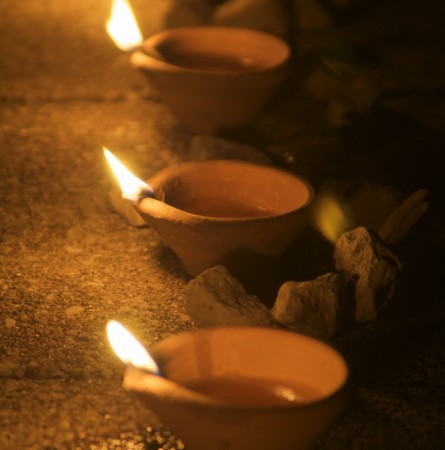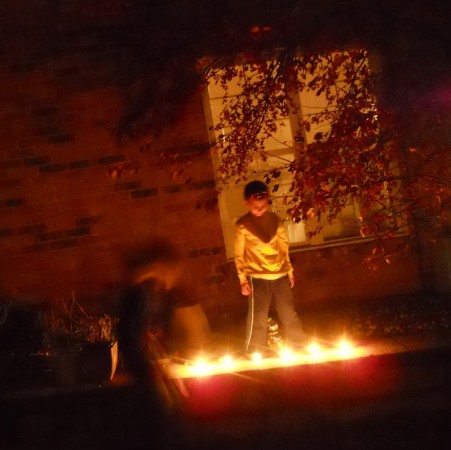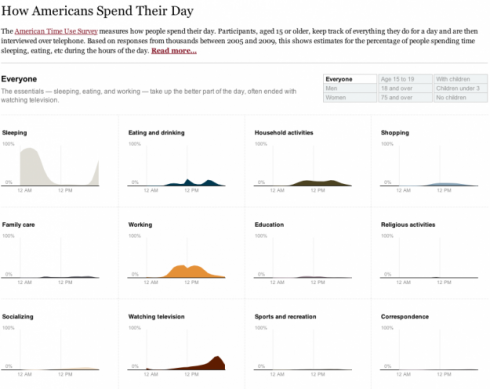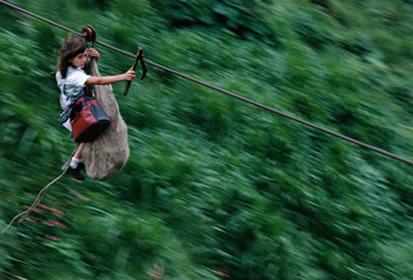We talked about the Voluntary Human Extinction Project (VHMET) in Environmental Science, when we were covering issues related to overpopulation and the need for genetic diversity. While I’ve never been quite sure just how serious VHMET is, I just came across this 2007 article by Robert Krulwich on NPR about a tribe of pygmies in the mountains bordering China and Burma that chose extinction because of all the genetic problems that were being caused by inbreeding.
Tag: culture
Diwali

I remember driving around town looking at the lights … arcs of dias sitting on split-bamboo trellises … everywhere. Hundreds and thousands of little flickering lights.
I remember refilling the oil in the dias and replacing the wicks as they went out.
I remember attending prayers, and eating good food — curry, dal, rice, roti — with my hands off banana leaves.
I found a new Indian/Pakistani grocery last week, just in time for Diwali. Diwali’s got elements of Thanksgiving (harvest feast), Christmas (lights and some present giving), and New Years (in some parts of India). Mostly, I remember it as the Festival of Lights. So, I picked up six dias at the store, and improvised with cooking oil and string (for the wicks), so my kids could have their chance to play with fire.
I think I’ll bring them into school too. Last week the middle schoolers attended a diversity conference. They didn’t seem to get too much out of it, so I’ve been trying to be a little more explicit about the subject.

On the Loss of Boredom in the Internet Age
I remember, as a child, being bored. I grew up in a particularly boring place and so I was bored pretty frequently. But when the Internet came along it was like, “That’s it for being bored! Thank God! ….”
It was only later that I realized the value of being bored was actually pretty high. Being bored is a kind of diagnostic for the gap between what you might be interested in and your current environment. But now it is an act of significant discipline to say, “I’m going to stare out the window. I’m going to schedule some time to stare out the window.”
— Clay Shirky in an interview with Sonia Saraiya on Findings.com
We need a little boredom, to let our minds wander and thus to spur creativity.
Zoë Pollock, on The Dish, highlights the thoughts of Clay Shirky and the response of Nicholas Carr on loss of space for boredom in the internet age.
Phagwah (Holi) in Slow Motion
In Response to National Stereotypes
The Guardian asked six major newspapers from across Europe about their local stereotypes of the other countries: Great Britain, France, Italy, Spain, Poland, and Germany. Then they asked six “cultural commentators” from those countries to respond. It’s quite an interesting read.
2012: Not the End of the World
I’ve fielded the question about if the world is going to end in 2012. My first-order answer has been to cite the poor level of success that previous predictions of apocalypse have had. NASA has had to address the problem, while C.G.P. Grey has a nice little video explaining the sources of the hysteria (he’s not very happy with the History Channel).
How People Spend Their Day
Flowing Data has an excellent set of interactive graphs showing how Americans spend their day. It’s an interesting look into modern American culture.
Main takeaway: we spend most of our time sleeping, eating, working, and watching television.
— Yau, 2011: How do Americans spend their days?
I particularly like comparing the 15-19 adolescents to adults (more time in education and less time watching television; there’s also a different sleeping pattern).

Zipline to School

Photographer Christoph Otto has a few utterly amazing photographs of the kids of Rio Negro in Columbia, who have to take a zipline to get across the valley to school.
This video gives more details.
It might also be useful if students need some incentive to try the zipline at the challenge course.
